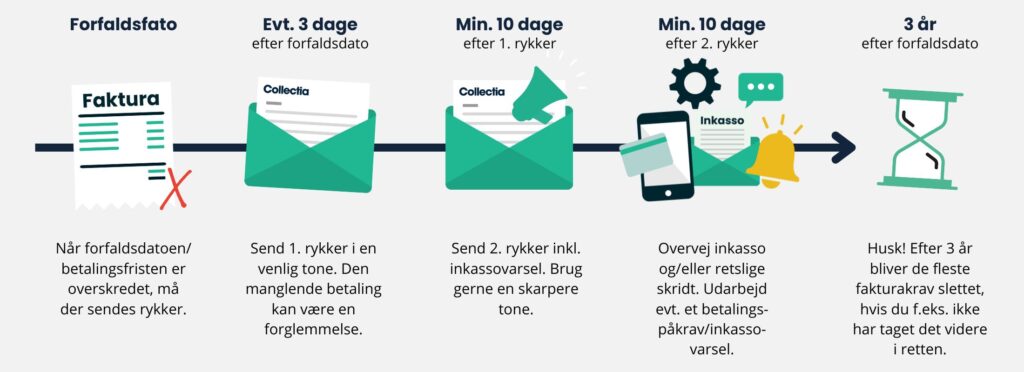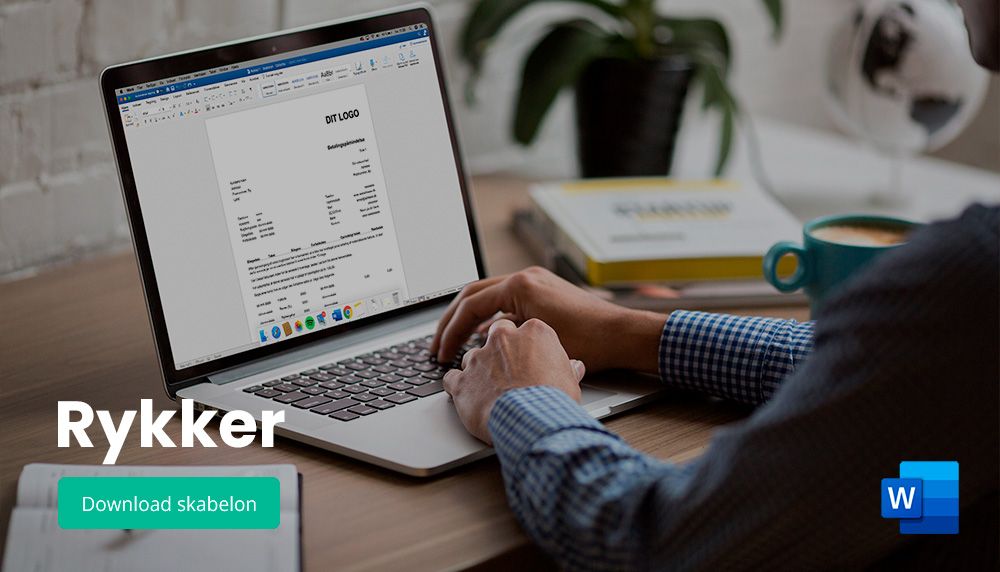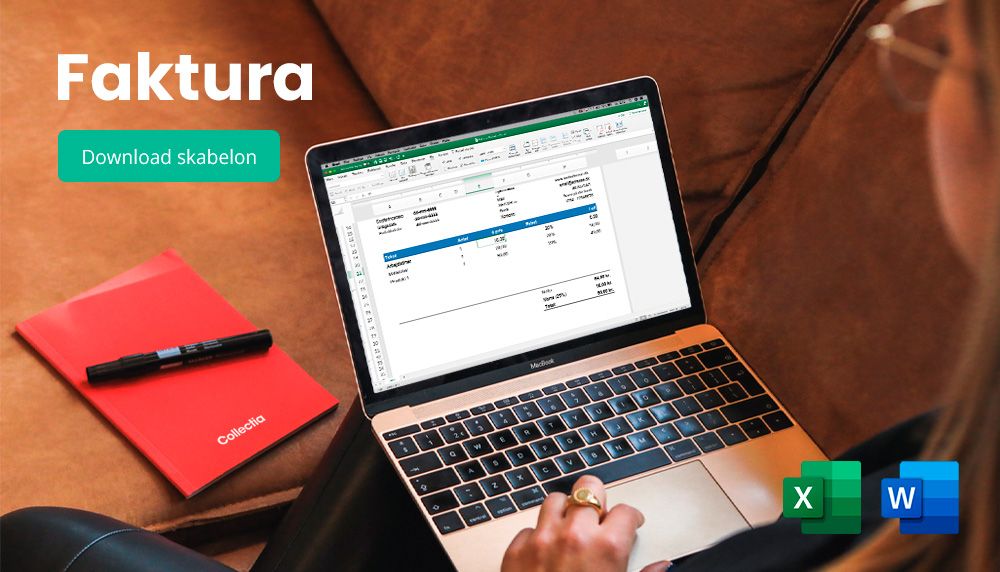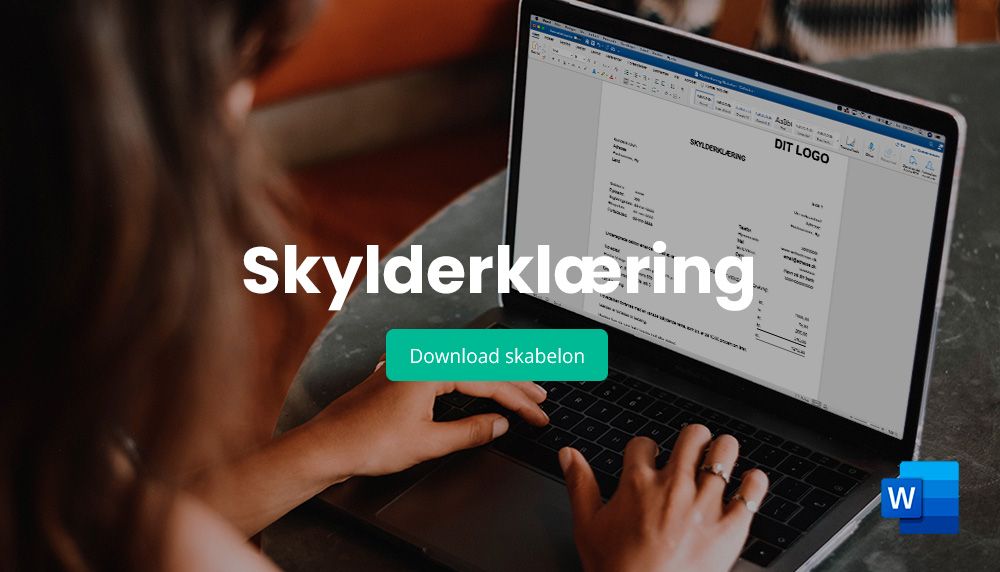
Effective dunning procedure - How to get your customer to pay
If you want to minimize the number of unpaid invoices and late payments, you need to be quick and consistent in your debtor follow-up. That's why it's important to establish a strict reminder procedure to ensure that all deadlines and legal requirements are met.
In this short guide, I will try to help you understand what an effective dunning procedure looks like and answer some of the most frequently asked questions. If you get a handle on your internal reminder procedure, you can hopefully avoid wasting time and effort on debt collection, including debt collection, in the future. Resources that are naturally better allocated to the development and operation of your business.
How fast can I move?
Take action as soon as a customer has not paid their invoice. This sends a clear and professional signal that they should only do business with you if they intend to pay. It also shows that you have 100% control of your bookkeeping.
You can also take a more proactive approach and write to your customer the day before the invoice is due. This has proven to be an effective way to encourage payment in several cases.
If you are quick to remind your customer of the non-payment, you are more likely to recover your money. At the same time, you give the customer less time to come up with excuses as to why they can't/won't pay. It's all about being 'top of mind' in this process. Therefore, I would recommend that you send the first reminder a few days after the due date of the invoice.
How many times do I have to move?
In theory, you can reminder your customer for payment as often as you like. However, you can only send the first reminder once the invoice is overdue. And, of course, you must not bother your customer unnecessarily. If you intend to charge a reminder fee, other rules apply.
The law allows you to impose a reminder fee on your reminders. However, you may send up to a maximum of 3 reminders with a reminder fee of DKK 100 incl. VAT. This means that you are not legally allowed to send 1 reminder with a reminder fee of DKK 300. And according to the Debt Collection Act, your reminders (with reminder fee) must be sent at least 10 days apart.
I recommend that you use professional reminder templates and that you send a maximum of 2-3 reminders before you hand over the invoice to a debt collection agency or a lawyer.
Example of a reminder process
Below you can see an example of what your dunning process could look like. You are of course welcome to let yourself be inspired. However, it is important that you follow all guidelines.

The friendly reminder
3 days after the invoice is due, you can send the first reminder. Please be kind in your first reminder. Non-payment may be due to an innocent oversight, crossed payments, misdirected illness, misunderstanding on the part of the customer or other unforeseen circumstances. Please send by email so that you have everything documented in writing. In the event of a court case, you will also be in a stronger position as you have important documentation that can be presented.
Jerk 1
Sent min. 10 days after the invoice date. Here you should use slightly sharper language to explain that the payment date has passed and therefore a payment deadline of 10 days is given and a reminder fee of DKK 100 is added. You can also charge interest, but I don't recommend it. However, you have the option to charge an interest rate equivalent to the National Bank of Denmark's lending rate (approx. 7%)
Please note that you can choose to send a debt collection notice instead, as you are not obliged to send a second reminder.
Reminder 2 with collection notice
If the customer does not respond to the friendly reminder and reminder 1, you should send reminder 2 with a collection notice. This should be sent at least 10 days after the previous reminder. You must be very clear in your tone and make your customer aware that if they continue to fail to pay, the matter will be sent to debt collection, which will result in additional costs. The debt collection notice will also include a reminder fee of DKK 100 and any interest. The customer will again have 10 days to pay.
Of course, you can choose to send three reminders in total. But if the customer does not pay after the first and second letter, the probability that he will pay after reminder 3 is very low.
Note: If you choose not to impose a reminder fee, the payment deadline can be less than 10 days. However, the payment deadline must always be 10 days on the debt collection notice, regardless of whether you have imposed a fee or not.
Remember a valid debt collection notice
If you choose to send a debt collection notice, you must be sure that it is valid under the Debt Collection Act. If it is not valid, you cannot legally send the customer on to debt collection.
Your debt collection notice must contain at least
- Name and address of your customer
- Your own company details
- The total amount due, including any interest and reminder fees
- The initial principal amount
At the same time, you must inform the customer that in case of continued non-payment, the matter will be referred to debt collection and that this may result in additional costs for your customer. You must also inform them that they will be given a payment deadline of 10 days.
Note: you are obliged to send a debt collection notice before you hand over the case for collection.
Send a debt collection notice - The ultimate guide
We have prepared the ultimate guide to drafting and sending a valid debt collection notice that complies with applicable legislation.
My customer is still not paying?
If you find yourself in the unfortunate situation that your customer is still not paying their bill or responding to your requests, debt collection or legal action may be the next step. That said, you should also consider whether an external company should handle your dunning process. A reminder from a third party often has a greater impact. It signals that you intend to proceed with the "case" if the customer ignores the reminders sent.
At Collectia, we offer full-service debt collection so that all guidelines are respected. We can help with everything from sending invoices, reminders and collection notices to handling legal proceedings, forced realization and ongoing monitoring of your customers.
Please note that a maximum of two months should elapse between the due date on the invoice and the date when the case should be sent for collection. The more recent the claim, the more likely it is to be recovered. If you wait too long, there is a high risk of suffering a financial loss.
If you are unsure whether your reminder letters meet all legal requirements, we can help. We can help you get your money back without damaging your relationship with the customer - so you can use your resources more efficiently elsewhere in your business.











